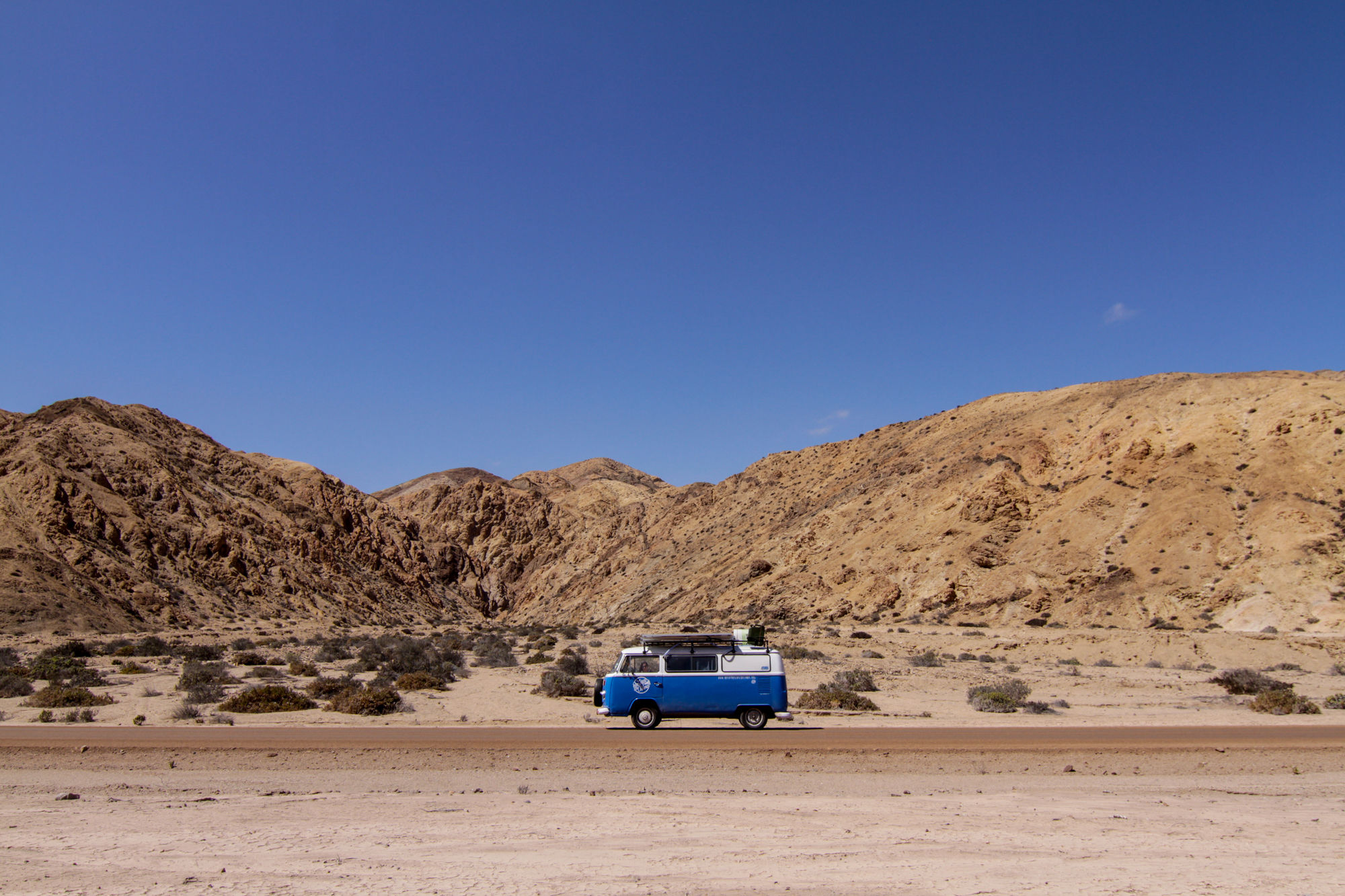Ready to embark on a worry-free journey? Don’t underestimate the importance of keeping all your vehicle documents in order and up to date. From the registration and technical inspection to the mandatory insurance and circulation permit, each document is crucial to ensure a safe and smooth trip. Keeping these documents updated will not only save you fines and legal troubles but will also provide you with the peace of mind and security needed to fully enjoy your road adventure. So before you embark on your next journey, make sure you have all your papers in order. A well-planned trip begins with proper organization!
1. Padrón (Vehicle Registration)
The vehicle registration (or Padrón) is the document that certifies a person’s ownership of a vehicle. It is issued by the Civil Registry when registering the sale transfer. This document includes information about the vehicle (brand, model, year, license plate) and about the owner (name and ID number).
The vehicle registration is the document that certifies the ownership of the car, so it is necessary to be able to leave the country with the vehicle. When transferring ownership of a car, the vehicle registration may take up to two weeks to be ready if the procedure is done at a notary public.
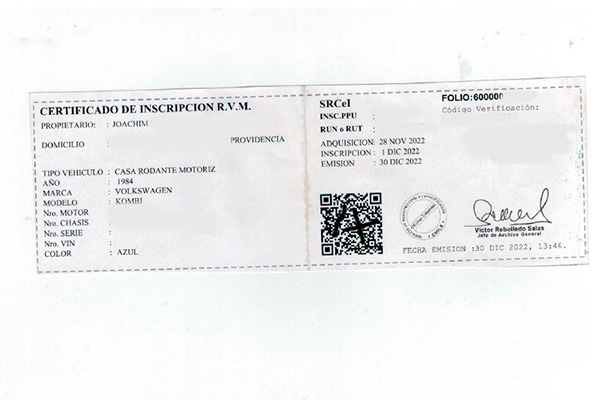
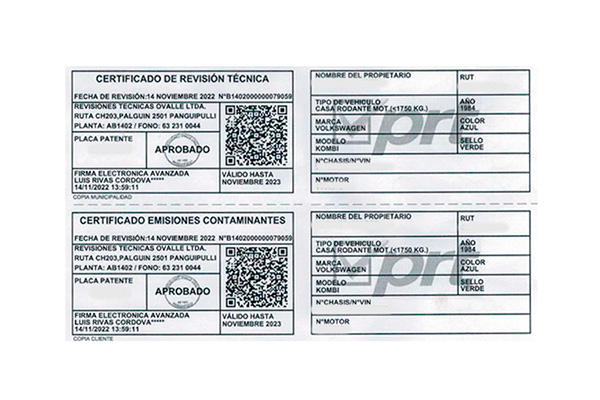
2. Revisión Técnica (technical inspection)
3. Seguro Obligatorio o SOAP (Mandatory Insurance)
The Mandatory Personal Accident Insurance (SOAP) is a insurance required by Chilean traffic law. All vehicles must pay it annually, and it covers death and physical injuries that are a direct consequence of traffic accidents caused by an insured vehicle. It covers the vehicle’s driver, passengers, and any other person affected by the accident (pedestrians, for example).
This insurance is purchased during the month of March and is associated with the vehicle. You can purchase the SOAP at different banks and financial institutions. We provide you with this LINK to get a quote.
Coverage amounts:
- 300 UF in case of death. (You can see the daily value of 1 UF here)
- 300 UF in case of total permanent disability.
- 200 UF in case of partial permanent disability.
- 300 UF in medical and hospital expenses.
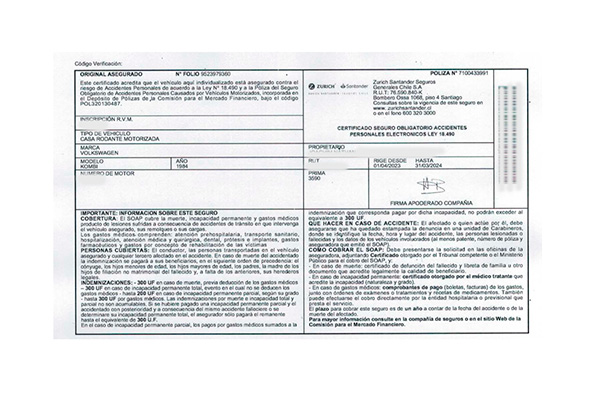
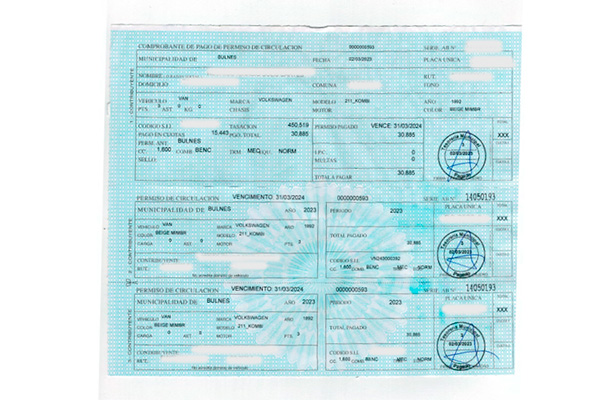
4. Permiso de Circulación (The Circulation Permit)
The Circulation Permit is a tax that every vehicle must pay annually to transit and use the streets of Chile.
This tax is paid to the municipalities of each commune during the months of February and March. You can pay this tax online as long as you do it on the website of the same municipality where the procedure was carried out the previous year. To pay it in person, you have to go to the traffic department of each municipality.
The amount of this tax varies depending on the appraisal value of each vehicle. You can check the value of your Circulation Permit on the SII website at this LINK.
To obtain the Circulation Permit, you need to present all the other documents mentioned previously (Vehicle Registration, Approved Technical Inspection, and valid SOAP).

